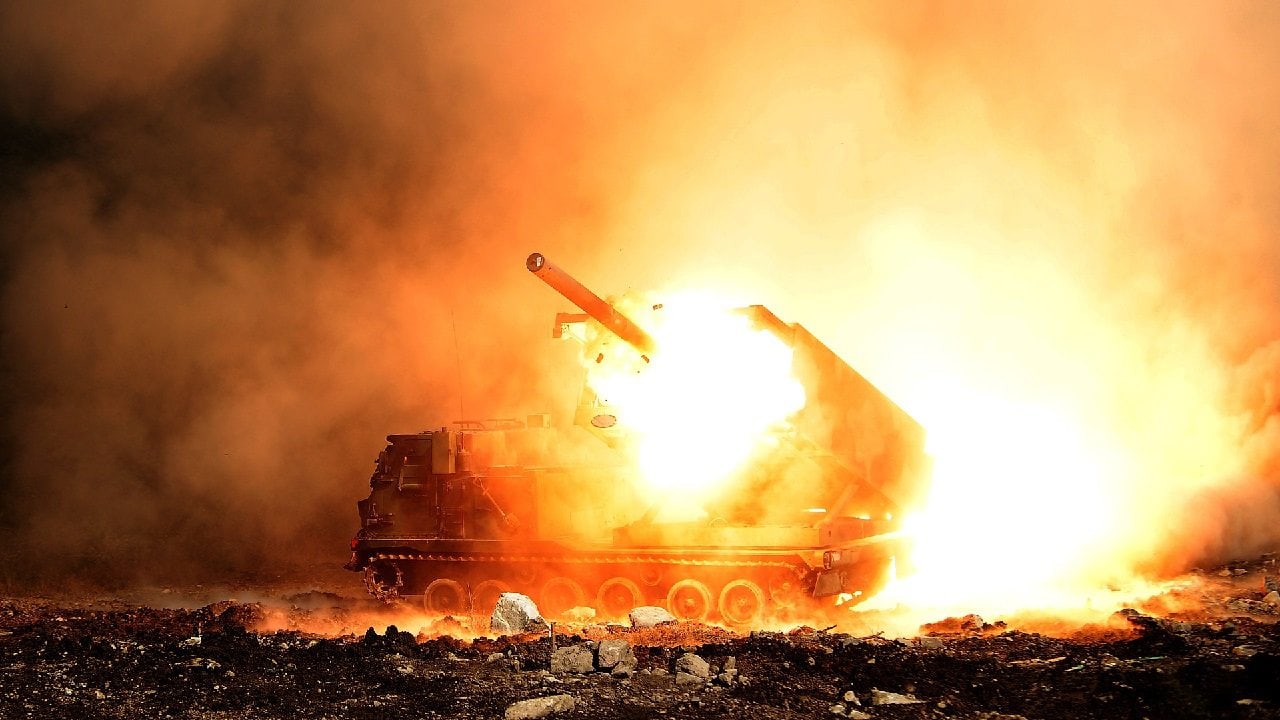The Ukrainian counteroffensive is unfolding along several axes of advance, but the Ukrainian forces are conducting a multi-layer operation.
Besides the attacks, Kyiv has been systematically dismantling the logistical nodes that support the extensive Russian defensive lines along the contact line.
Damaged Bridges Equals Strained Logistics
Although the heaviest fighting is taking place in the Donbas and the Zaporizhzhia Oblast, the Ukrainian forces have been attacking behind enemy lines as well.
“As of mid-August 2023, Russian forces were continuing to employ pontoon bridges at Chonhar and Henichesk crossing points on the border between southern Ukraine and occupied Crimea,” the British Military Intelligence assessed in a recent estimate of the war.
The two permanent bridges in the crossing points have sustained significant damage from Ukrainian long-range precision strikes over the past few weeks. The Ukrainian military has been using Storm Shadow and SCALP-EG air-launched cruise missiles to take out Russian high-value targets.
“The pontoon bridges are unlikely to be able to fully sustain the flow of heavy vehicles carrying ammunition and weaponry to the front,” the British Military Intelligence added.
The clear goal of the Ukrainian military is to harass the logistical system of the Russian forces and make it hard to supply their units on the frontlines, as well as commit forces to defend or repair damaged or destroyed logistical nodes.
“The resulting bottlenecks mean Russian forces are partially reliant on a long diversion via Armiansk, northern Crimea. This is adding further friction to Russia’s logistics network in the south,” the British Military Intelligence stated.
Crimea remains a primary goal of the Ukrainian military, and the ongoing large-scale counteroffensive aims to put Kyiv’s forces within striking range of the Peninsula.
However, destroying infrastructure can come back and bite the Ukrainian forces because some of it would be necessary to storm and capture Crimea.
The Ukrainian forces have been honing their amphibious warfare capabilities, but an operation to capture the Crimean Peninsula would require a large bridge capable of supporting Kyiv’s heavy mechanized brigades and heavy weaponry, including main battle tanks, artillery pieces, fuel trucks, infantry fighting vehicles, and armored personnel carriers.
The Challenge of Crimea
Before this war ends, Kyiv would ideally like to liberate the Crimean Peninsula.
Invaded and annexed by Russia in 2014, Crimea is a strategic piece of land that can control access to and sea traffic in the Black Sea.
Moscow has turned the Peninsula into an “unsinkable aircraft carrier” with anti-access, aerial denial (A2/AD) anti-air and anti-ship systems that protect Russia from the south.
Kyiv, on the other hand, wants to take back Crimea because it acts as a shield, protecting the south of Ukraine.
Judging from the Russian military’s skillful defense against the Ukrainian counteroffensive, an operation to liberate the Crimean Peninsula would be costly and hard to pull off. Indeed, to have success, Ukraine must take combined arms operations to a new level and also incorporate joint operations in its playbook, with the simultaneous use of land, naval, and air forces.
A 19FortyFive Defense and National Security Columnist, Stavros Atlamazoglou is a seasoned defense journalist specializing in special operations and a Hellenic Army veteran (national service with the 575th Marine Battalion and Army HQ). He holds a BA from the Johns Hopkins University, an MA from the Johns Hopkins’ School of Advanced International Studies (SAIS), and is pursuing a J.D. at Boston College Law School. His work has been featured in Business Insider, Sandboxx, and SOFREP.
From the Vault
The Navy Sent 4 Battleships To Attack North Korea
‘Sir, We Hit a Russian Submarine’: A U.S. Navy Sub Collided with a Nuclear Attack Sub

